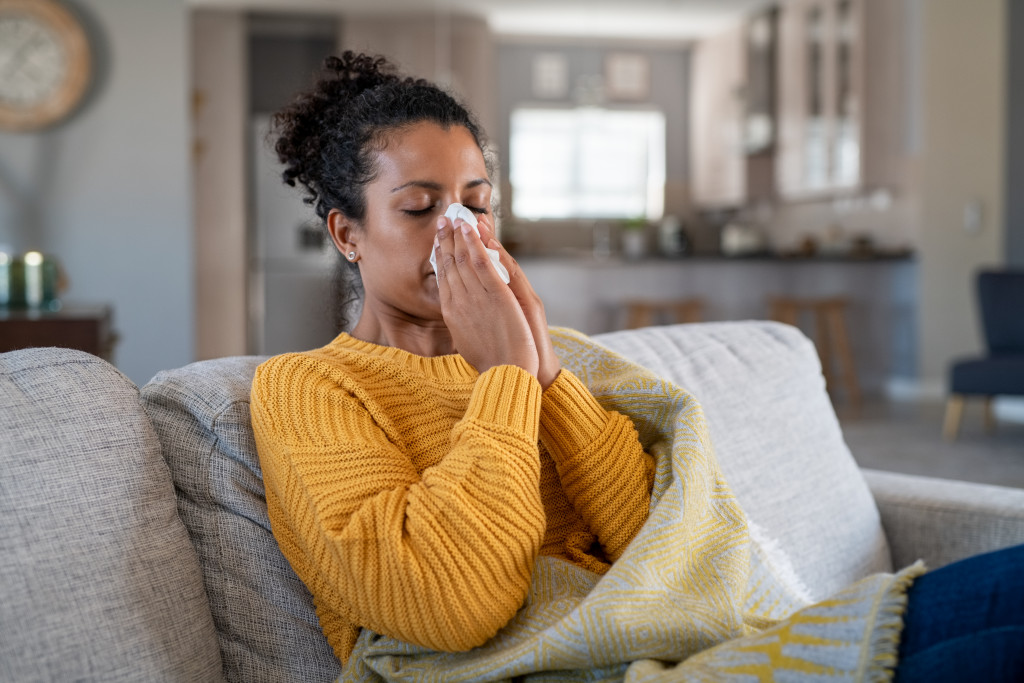- Clean indoor air is essential for physical and mental health.
- Poor indoor air quality can lead to respiratory and cardiovascular illnesses, fatigue, headaches, and depression.
- Invest in AC duct cleaning and sealing services every three to five years.
- Keep your home clean by dusting and vacuuming regularly using a HEPA filter.
- Control humidity in your home to prevent mold, mildew, and dust mites.
As a new mom, you want the best for your baby, from their health to comfort. One essential aspect of your baby’s health is the air they breathe in your home. Poor indoor air quality can lead to respiratory issues, allergies, and other health problems. Luckily, there are several ways to improve indoor air quality in your home. Keep reading for a guide on improving indoor air quality in your home.
The importance of clean indoor air
Clean indoor air is more important now than ever before. With more and more people spending extended periods indoors, the quality of the air you breathe directly impacts your overall health and well-being. By keeping the air in your home free of harmful pollutants, you can reduce the risk of respiratory and cardiovascular illnesses.
But clean air isn’t just good for your physical health but also for your mental health. Poor indoor air quality is linked to fatigue, headaches, and depression.
The impact of poor air quality at home

Sadly, the air quality in most homes can be pretty poor. Dust, dirt, and particles constantly circulate through our air conditioning systems and pollute the air we breathe. This means that even if you don’t live near a busy roadway or industrial zone, you could still be breathing in unhealthy levels of pollutants.
It doesn’t help that many people don’t realize how much of an impact poor air quality can have. That’s why it’s essential to take steps to improve the air quality in your home.
Tips for improving indoor air quality
You can take several steps to help improve your home’s air quality.
Invest in AC duct cleaning and sealing services
The best thing you can do is to invest in AC duct cleaning and sealing services. An HVAC technician can help you clean out the dust and dirt from your air conditioner’s ducts and check for any leaks or damage that could be causing air pollutants to enter your home. In general, AC duct cleaning and sealing should be done at least once every three to five years.
Keep your home clean
Dust and dirt are enemies of good indoor air quality. The more you clean, the less dust, dirt, and other indoor air pollutants you’ll have inside your home. Dust and vacuum your home regularly, including carpets, rugs, and furniture. Use high-efficiency particulate air (HEPA) filters to trap tiny pollutants like pet dander and dust in your vacuum cleaner. Dispose of garbage and recyclables properly and avoid letting clutter accumulate.
Control humidity
Keeping optimal humidity levels in your home is essential for healthy indoor air. High humidity levels can lead to mold, mildew, and dust mites while low humidity levels can lead to dry skin and respiratory issues. Keep your home’s humidity between 30% and 50%. Use a dehumidifier to reduce humidity levels or a humidifier to increase them, depending on your home’s specific needs. Be sure to clean these appliances regularly to prevent bacterial growth.
Use natural air purifiers

Adding natural air purifiers is a cost-effective and eco-friendly way to improve indoor air quality. Plants are natural air purifiers that can absorb harmful indoor air pollutants while releasing oxygen. Incorporate plants such as spider plants, peace lilies, and English ivy to improve indoor air quality. You can also use beeswax candles that release negative ions, which can neutralize pollutants.
Ventilate your home
Proper ventilation is crucial in improving indoor air quality. Ventilation allows clean air to circulate through your home, preventing stagnant air where pollutants can collect. Opening windows and doors, using exhaust fans in your bathroom and kitchen, and using an air purifier with a ventilation fan can help improve indoor air quality in your home.
Change air filters
Regularly changing your HVAC system’s air filters is another way to improve indoor air quality. Ideally, change air filters every three months or more often if you have pets or have allergies. Air filters trap air pollutants circling your home from your HVAC system. Dirty air filters can make your system work harder, increasing energy bills while reducing your home’s indoor air quality.
Final thoughts
As a new mom, providing a safe and healthy home for your baby is essential. Improving indoor air quality in your home is one way to achieve that goal. By incorporating the tips in this guide, you can reduce harmful indoor pollutants and promote good health for you and your family.

